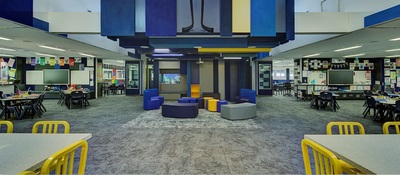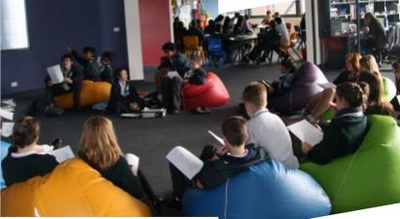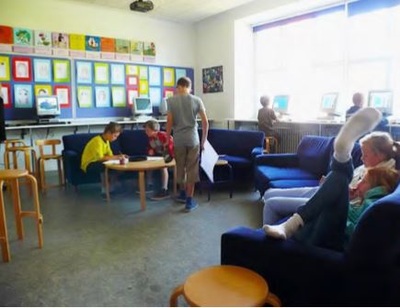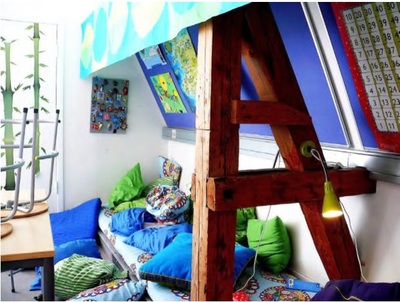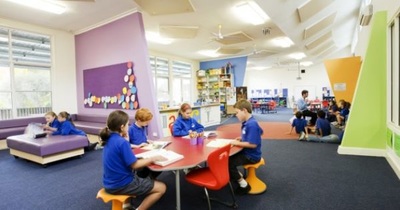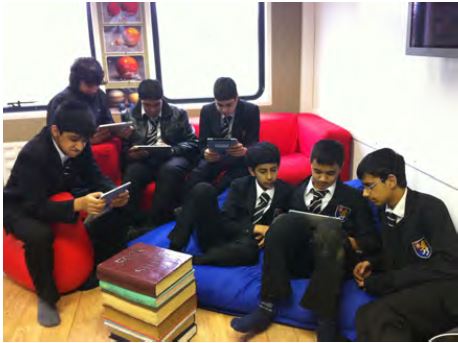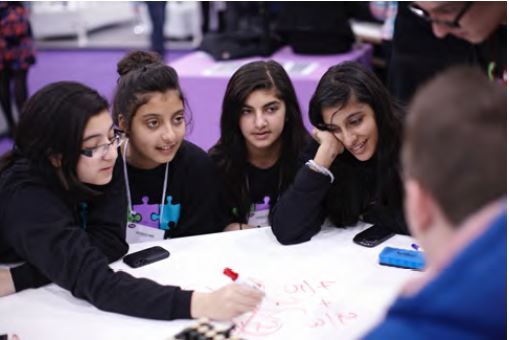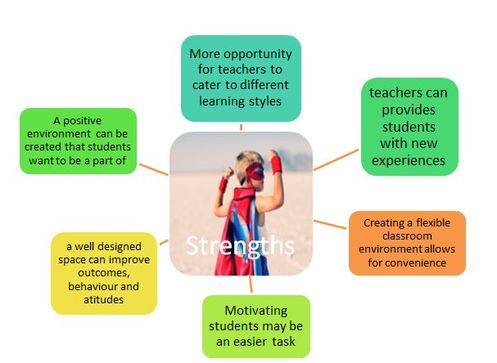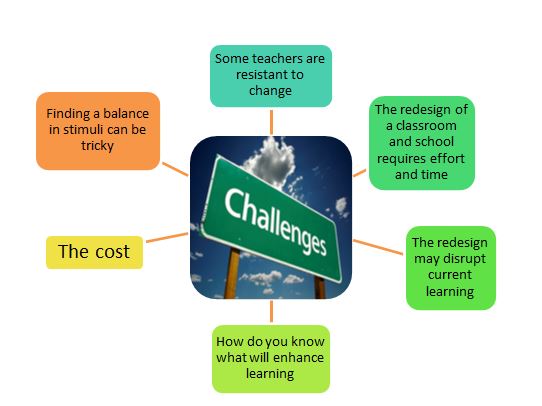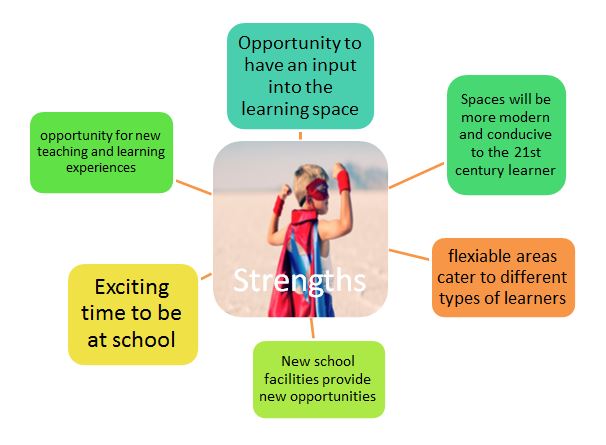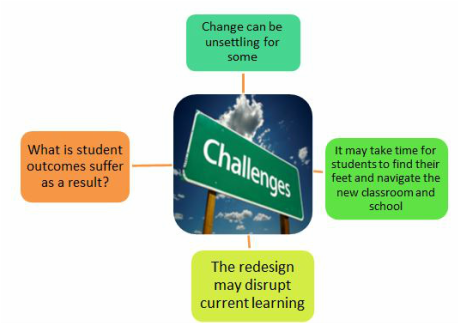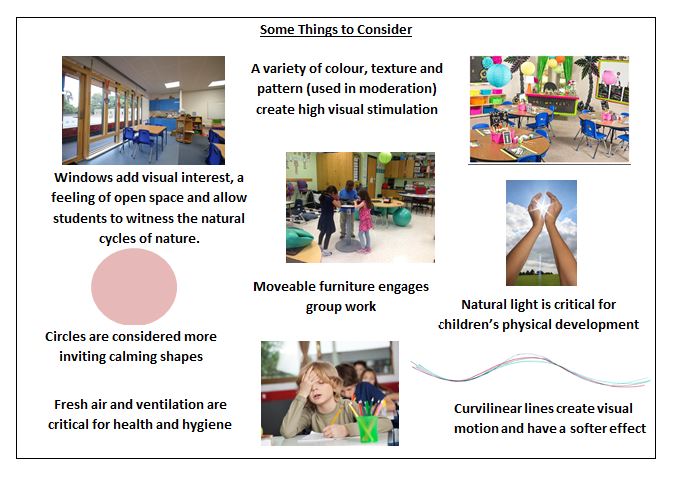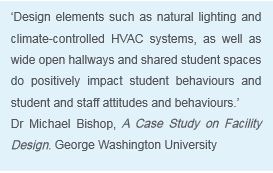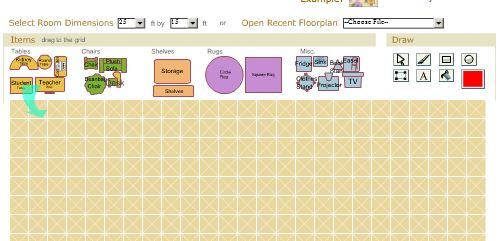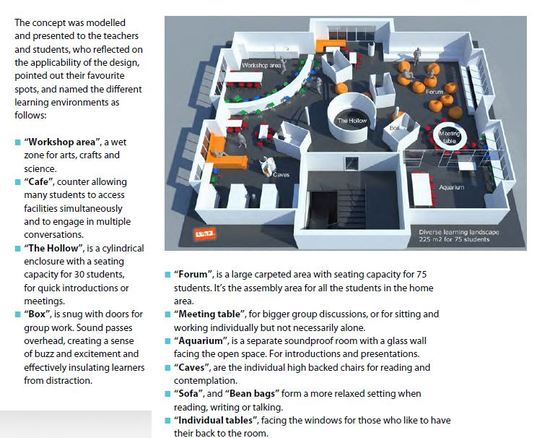The Classroom and School
As teachers it is our role to ensure we are successfully meeting the needs of our students and catering to the different learning styles of individuals in the class. The design of a classroom and school setting play an important part in achieving this while also having a direct impact on the learning productivity and success of students. For this reason, it is essential we tap into this resource.
Winston Churchill once said that “We shape our building and our buildings then shape us”. Are the physical structures within our school influencing our teaching and how we deliver instruction? It’s time to give some more thought to what our learners need.
The idea of students being seated at desks working in rows is a thing of the past. Classrooms today should accommodate for all types of learners. Research by Heppell (2013) determined that older designed classrooms did not consider the entire spectrum of students and in fact hindered students ability to achieve. Heppell (2013) also asserts that by changing the physical space in which we teach we can foster real student engagement and also encourage individuality.
When designing a classroom, some questions Read (2010) suggests we ask ourselves is “Does my classroom design reflect a welcoming learning environment? Does my classroom design represent the curriculum or theoretical perspective of the centre? How do the children in my class perceive the designed classroom? and What type of design characteristics do children in the environment prefer and why?” (p.75).
Winston Churchill once said that “We shape our building and our buildings then shape us”. Are the physical structures within our school influencing our teaching and how we deliver instruction? It’s time to give some more thought to what our learners need.
The idea of students being seated at desks working in rows is a thing of the past. Classrooms today should accommodate for all types of learners. Research by Heppell (2013) determined that older designed classrooms did not consider the entire spectrum of students and in fact hindered students ability to achieve. Heppell (2013) also asserts that by changing the physical space in which we teach we can foster real student engagement and also encourage individuality.
When designing a classroom, some questions Read (2010) suggests we ask ourselves is “Does my classroom design reflect a welcoming learning environment? Does my classroom design represent the curriculum or theoretical perspective of the centre? How do the children in my class perceive the designed classroom? and What type of design characteristics do children in the environment prefer and why?” (p.75).
Some Inspiration on Classroom and School Learning Spaces
|
"All the schools where children lead the design of their own learning spaces reach the same surveyed conclusion: at home just about all children read whilst comfortably seated and this is almost never on an upright straight backed chair. So if one of the learning activities that you value is quiet reading, even just the pre-reading before something active or collaborative starts, them a quiet, comfortable, reading corner is an important zone". (S, M and J Heppell, 2015, p.5-6) |
|
Writeable surfaces are a fun and exciting concept that allow students to write their ideas, thoughts or work on desks, walls and windows. This public way of writing "helps attract support when you need it, helps model excellence when you see it and encourages work when you should be doing it" (S,M and J Heppell, 2015, p.7). |
Strengths and Challenges
For Students
"Spaces that are flexible, accommodating different approaches and uses, improve the odds for effective learning"
(Oblinger, 2006, p.70)
Insights on strengths and Challenges drawn from: Innovative Learning Environments Research Study, Agile Learning Spaces; a user manual for teachers and students, (Barrett & Zhang, 2009). (See references)
Approaches, Strategies and Resources
As teachers we need to acknowledge that physical conditions of a classroom can have significant consequences on attitudes, behaviours and the achievement of students. Research suggest that the impact of colour, temperature, ventilation, and smells on students is often significantly undervalued.
The lack of consultation regarding the classroom design is something that needs to change. Students’ perspectives must be considered in order to improve these learning spaces. Lets ask students for their input on colours. What makes them feel motivated, calm, happy, safe?????
(MCEETYA, 2008)
|
The impact of a school redevelopment
Following the redevelopment of Maglegaard school, in Denmark, "result was evaluated showed that the school had risen from No. 403 to No. 3 in the national rankings and at the same time 97.8% of the children were said by their parents to be very happy or happy to go to school. Furthermore it was said that the vertical structure had had a great influence on social skills. It helped children to feel that they were unique, as they could help other children. The less academic children did not feel burdened by what they could not do, as they had their individual plans. And the teachers stated that there was a greater tolerance of other children, and the students agree that not everyone should be treated the same" (Guldbaek Broens, 2014, p.41). |
